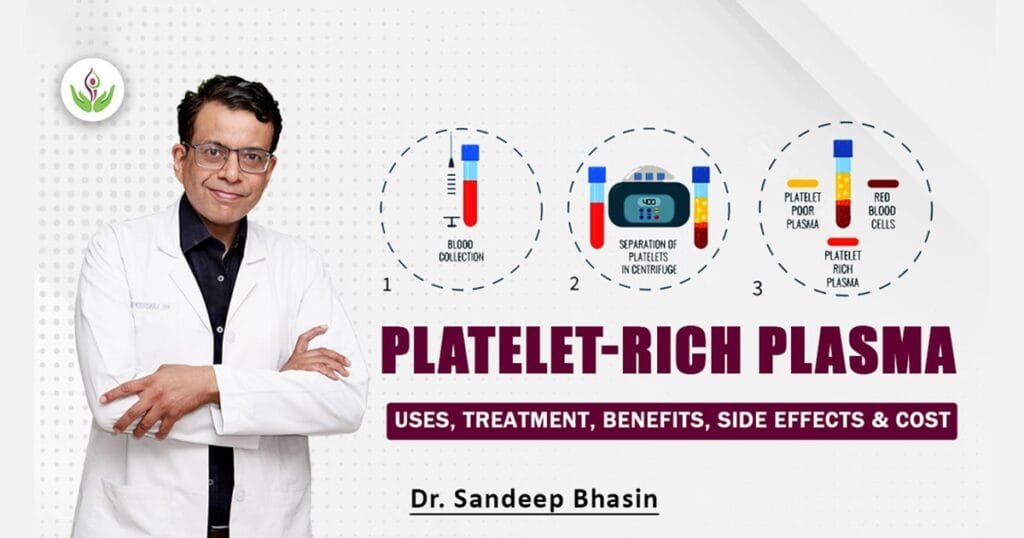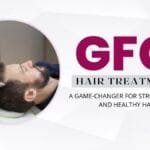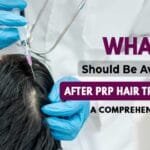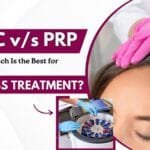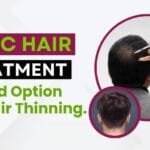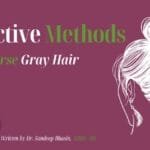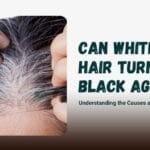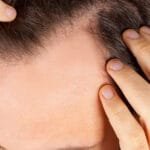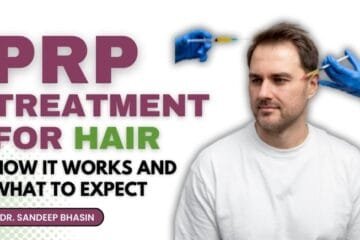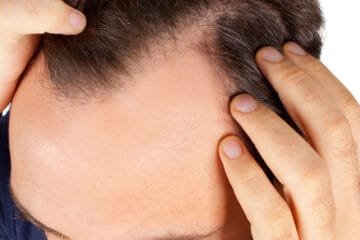What is PRP Treatment?
An overview:
Losing your hair can be devastating, especially to your sense of self-worth. Such mishaps make one hesitate to socialize. According to a study, women who suffer from hair loss are statistically more likely to be depressed than the overall population. According to another expert, the “immense emotional weight” of dealing with hair loss can be particularly difficult for men.
The experts believe that a new natural hair restoration method could allow patients to grow new hair without resorting to invasive procedures, pharmaceuticals, or topical treatments. Platelet-rich plasma is the acronym for platelet-rich plasma, which reverses hair loss and stimulates hair regrowth.
The PRP treatment does not stop here. Platelet-rich plasma is a procedure that is used for many other purposes, some of which are listed below:
- PRP Treatment for Skin
- PRP Treatment for Face
- PRP Procedure for knee
- PRP Procedure for the Eye
Although PRP for hair restoration is still budding, it may be an alternative if you wish to appear and feel like yourself again. The procedure is a simple in-office treatment, where blood is collected from your arm and taken in a canister for centrifuging. The excellent content of the blood is separated and used for Platelet-Rich Plasma. The process is as quick as it sounds.
Read Too: Latest Treatment For Baldness in 2022
PRP Procedure
The following are the steps typically involved in a PRP injection treatment plan for loss of hair:
- Trained medical personnel to remove the required blood from the arm’s vein section
- The blood sample is spun in a unique device to separate its components
- After drawing blood, a medical expert extracts platelets using a syringe
- A doctor injects platelets into specific spots on the patient’s scalp
Patients undergoing PRP therapy typically experience no residual effects and can immediately resume their regular routines. No recovery period is necessary for the procedure, and you need not stay at the hospital/clinic long.
How long does the PRP procedure take?
The procedure may involve multiple sessions but does not exceed one hour. Ideally, the process takes around 30 to 45 minutes, starting from the point you enter the clinic and blood is drawn from your arms to the completion of the procedure.
Short-summary:
The PRP procedure treatment differs in its timeline as far as results are concerned. A person wishing to re-growth hair may have to wait at least six months and a few weeks only in case of joint infections. One should be aware that PRP treatment is durable but not permanent.
What is the Use of PRP?
The PRP treatment, which takes place through injections, has multiple uses. The physician can treat the following with this Treatment:
- Torn tendons
- Muscle injuries and wounds
- Injuries to various joints
- Pain that arises due to arthritis
- Inflammation to tendons
Apart from all these, PRP uses in medicine extend to the following fields as well:
- PRP uses dermatology to relieve acne, alopecia, and skin ulcers and includes tissue repair
- PRP used for hair loss is generally adequate for up to two years and 18 months for a few
- PRP used in orthopedics helps cure Tennis Elbow, Meniscal repair, Shoulder Arthroscopy, and mild Osteoarthritis
How long does PRP last?
It is difficult to predict the exact time or date until the Platelet-Rich Plasma may last. The reason is simple. Everyone differs. However, the effectiveness can last nine months at the minimum. The procedure also depends on how good the physician is with the process and how well the patient’s body accepts the process. You can expect it to last for anything around eight to nine months, if not more.
Short-summary:
Platelet-rich plasma treatment is indeed effective, as seen above. The purpose of PRP is to relieve the patient from pain; such relief tends to last for an extended period. The other areas in which this treatment is effective are PRP uses for the face & hair.
What are the Benefits of PRP?
If you are already deciding to go for a PRP Treatment, you must surely desire to know the additional benefits of the treatment.
- PRP Treatment sets forward the stimulation for the following:
- Collagen and elastin productivity
- Tightness to facial skin
- Smoothening of wrinkles
- Tones face
- improves skin texture
- Proven effectiveness in areas where laser treatment cannot be used is one of the benefits of PRP for undereyes. Platelet-rich plasma engages only natural elements such as your blood and does not allow artificial or third-party samples to be mixed.
- It is effective and safe.
- The results are not short-term but long-term.

What is PRP treatment good for?
Generally, Platelet-Rich Plasma therapy is used for treating hair loss more than any other purpose in the present day. The ideal candidate for this treatment is the following:
- People who do not have an existing medical condition
- People who do not have skin diseases of a certain type
- People who are not prone to the spread of infection when injected
- People who do not have a disease that is considered metastatic
- People who suffer from bleeding disorders
Can PRP re-grow hair?
PRP does indeed help restore your scalp hair. It uses the growth factors in the blood that trigger cell functions for hair growth. These platelet-rich injections having complex growth factors and bioactive proteins help restore hair growth. However, you should also note that such hair growth is not permanent. Yes, it would last for even two years, perhaps. The best way is to return to the same treatment when you notice your hair receding.
Does PRP work for frontal hair loss?
PRP certainly does aid in helping you recover frontal hair loss. There are hair follicles that encourage your frontal hair to recede. Platelet-rich plasma stimulates weak hair follicles and strengthens them by promoting collagen and elastin.
Short-summary:
Platelet-rich plasma’s advantages are not only manifold, but it aids healing in many sections of the human body. PRP benefits for the face and PRP benefits for hair are the most popular among the many Platelet-Rich Plasma treatments.
What are the Side Effects of PRP Therapy?
Like all kinds of procedures, Platelet-Rich Plasma therapy also has some side effects. The side effects of PRP therapy are as follows:
- Infections in the treated area despite several precautions taken
- Rare Allergic reactions. You must let your doctor know if you are already aware of some drug reactions which you may have
- Blood clot due to accidental damage by the needle to the blood linings
- Chances of acute pain in the injected area. One can also expect
- Skin discoloration around the area affected
There are side effects for PRP procedures used for other areas apart from hair loss. They are listed below.
Side effects of PRP on the face
The following side effects are bound to occur within six days of PRP treatment.
- Bruises
- Inflammation
- Swelling
- Redness
Side Effects of PRP on Hair Growth
A person would experience one or more side effects after PRP treatment for hair loss.
- Tenderness in the scalp region
- Mild headaches
- Itching sensation
- Swelling
- Pain in and around the injection site, although mild
Side effects of PRP skin treatment
The following side effects are bound to occur within six days of PRP treatment.
- Bruises
- Inflammation
- Swelling
- Redness
Side effects of PRP injection
The PRP injection is low-risk, and the maximum side effect one can feel is some soreness added to bruising post-treatment. These are likely to subside within a couple of days or within a week of the procedure.
Side effects of PRP on the scalp
Side effects of PRP on the scalp include the following:
- Tenderness in the scalp region
- Mild headaches
- Itching sensation
- Swelling
- Pain in and around the injection site, although mild
Side effects of PRP treatment for knee
Generally, the following side effects are observed post-treatment of PRP to the knee:
- Stiffness
- Bleeding
- Skin discoloration
- Bruises
- Swelling
Is PRP treatment safe?
None can assure of a 100 percent safe medical procedure. In the case of Platelet-Rich Plasma, as your blood is used, the chances of anything untoward happening are less. If you require it, you can proceed without hesitation, as it is essentially a risk-free procedure.
Who should not do PRP?
Before opting for the procedure, ensure that you thoroughly understand the process. Make sure that you have confirmed that you are the right candidate for the procedure. Platelet-rich plasma is considered inappropriate for the following:
- A person with a pre-existing medical condition that would lead to its worsening with PRP injections
- A person who is suffering from an active infection
- A person who has a metastatic disease
- A person with a particular skin disease can get aggravated
- A person suffering from bleeding disorders or, for that matter, blood-related issues
Click Here for a GFC Hair Makeover Experience.
What is the Best Shampoo after PRP treatment?
As per many dermatologists, the following six shampoos are recommended post-treatment. They are:
- Briogeo Scalp Revival Charcoal + Coconut Oil Micro-Exfoliating Shampoo
- Cleure Hypoallergenic Volumizing Shampoo for Sensitive Skin
- Free & Clear Hair Shampoo
- Pantene Nutrient Blends Miracle Moisture Boost Rose Water Shampoo
- L’Oréal Paris EverPure Sulfate-Free Moisture Shampoo
- Aveeno Active Naturals Pure Renewal Shampoo
You can discuss with your doctor post the procedure and ensure that you use the right products for your regrown hair. This would be necessary to optimize the results of the process and its longevity.
Short-summary:
Side effects are a part of any treatment, but PRP only promises a minimum. Thus, it remains a reliable and safe treatment, comparatively speaking.
Precautions after PRP Treatment
Proper precautions after PRP Treatment are necessary to optimize the procedure’s results. You must be very careful for one month after the procedures. Read on to learn the general guidelines for post-platelet-rich plasma treatment. Your doctor will provide any additional case-specific guidance if required.

Day 1:
Complete rest on day one with minimal but necessary activity
Day 2 and Day 3:
- Movement is allowed, but one should not strain the injected area
- Medications are not allowed during this period unless advised by the physician. It is also best to stay hydrated during this period
- Along with the above, additional precautions after PRP hair treatment is necessary
- Avoid cooling or heating the injected area naturally or artificially
- Avoid hot baths and saunas.
- Avoid alcohol
- Avoid smoking
After 4 weeks:
- You can increase your daily activity gradually, and that includes exercising too
- Applying ice is permitted
- Medication as per advice
- Continue to avoid caffeine, alcohol, and cigarettes
After 5 weeks:
You can now start physical therapy.
How long should you rest after the PRP injection?
You should rest for one day following treatment and minimal movement on the second and third days. You can resume your normal routine in 2 to 3 days after the procedure.
How soon can I wash my hair after PRP?
Physicians advise you to wait for at least a day, even though having a shampoo bath after six hours post-treatment is permissible. You can have a detailed discussion with your physician at the time of discharge to confirm your decision.
Can you exercise after PRP hair treatment?
Wait for at least a week to resume your normal exercising regimes. You must give yourself some time to your body to adapt to the new change. Also, avoid the following exercises for a period of a minimum of two days post-PRP hair treatment if it exposes you to the following:
- The sun and its heat
- Steam rooms
- Saunas
- Swimming pools
Light exercises should be okay and might not cause any trouble to your recovery. However, have a word with your dermatologist before you take any drastic measures.
What is the After PRP face treatment care?
One must take precautions after PRP injection on the face. Once the Platelet-Rich Plasma treatment is done on your face, follow these set of instructions found below:
- Avoid any exposure to the sun
- Avoid applying sunscreen for a minimum of six hours
- Avoid wearing makeup for a minimum of six hours
- Accept prophylactic medication in case you experience cold sores
Short-summary:
The most critical factor for the success of PRP treatment is the post-treatment period. The period of relaxation and the slow climb to normalcy are specified in the passage above. It’s crucial to adhere to these guidelines as well.
What is the Cost of PRP Injection?
Even though the cost of PRP injection varies in India from City to City, the average minimum cost is Rs. 5000/-. The maximum cost is Rs.15 000/-. For example, the price of PRP treatment in Delhi is between Rs. 4000 to 15000/-.
Is PRP worth the money?
PRP hair treatment is worth its cost for people who fear that their identity goes down with baldness. Although Platelet-Rich Plasma is not a permanent solution to hair loss, it is durable. The other fact is that you can undergo the same treatment when the problem resumes.
Why is PRP treatment costly?
PRP treatment is expensive, as the cost of PRP injection also varies based on the following factors:
- The Dermatologist’s experience
- The clinic’s reputation
- The total number of sessions one may have to sit through
- Equipment quality used during the procedure
You can check out the clinics offering the best treatment in Delhi for Platelet-Rich Plasma procedures, and check the dermatologists involved, their experience, and previous case studies if available. You must go for the procedure only after all these processes. Going for treatment at any random clinic is not a great idea, as the results might not be as expected.
Short-summary:
It is normal in a country like India for PRP therapy costs for the face or hair to vary from city to city. For example, the face’s PRP treatment cost would differ from city to city. Platelet-rich plasma treatment is highly preferred by people who wish to retain their youthful looks. The price does not matter to them in such cases. However, the cost is bound to go up if you prefer the best treatment in Delhi.
Conclusion
In this conclusion, PRP treatment is gaining popularity due to its ability to wind back years and instill confidence. Despite the cost, it is affordable for middle-class families in metropolitan areas. The high success rate justifies the expense, and any side effects are temporary and fade with time. Patients should conduct a background check on the physician and clinic and ensure they do not have existing infections that could worsen with the treatment. PRP therapy for hair loss is common, but other uses are also becoming popular. Prior to treatment, it is important to have a thorough understanding of the procedure and choose a clinic and dermatologist wisely to achieve long-lasting and positive results within your budget and requirements.
References
- Dhillon RS, Schwarz EM, Maloney MD. Platelet-rich plasma therapy: future or trend? Arthritis Res Ther. 2012;14:219. (Link)
- Lai LP, Stitik TP, Foye PM, Georgy JS, Patibanda V, Chen B. Use of platelet-rich plasma in intra-articular knee injections for osteoarthritis: a systematic review. PM R. 2015;7:637–648. (Link)
- Wang SZ, Chang Q, Lu J, Wang C. Growth factors and platelet-rich plasma: promising biological strategies for early intervertebral disc degeneration. Int Orthop. 2015;39:927–934. (Link)
- Ellis J.A., Sinclair R., Harrap S.B. Androgenetic alopecia: Pathogenesis and potential for therapy. Expert Rev. Mol. Med. 2002;4:1–11. doi: 10.1017/S1462399402005112. (Link)
- Rogers N.E., Avram M.R. Medical treatments for male and female pattern hair loss. J. Am. Acad. Dermatol. 2008;59:547–566. doi: 10.1016/j.jaad.2008.07.001. (Link)

